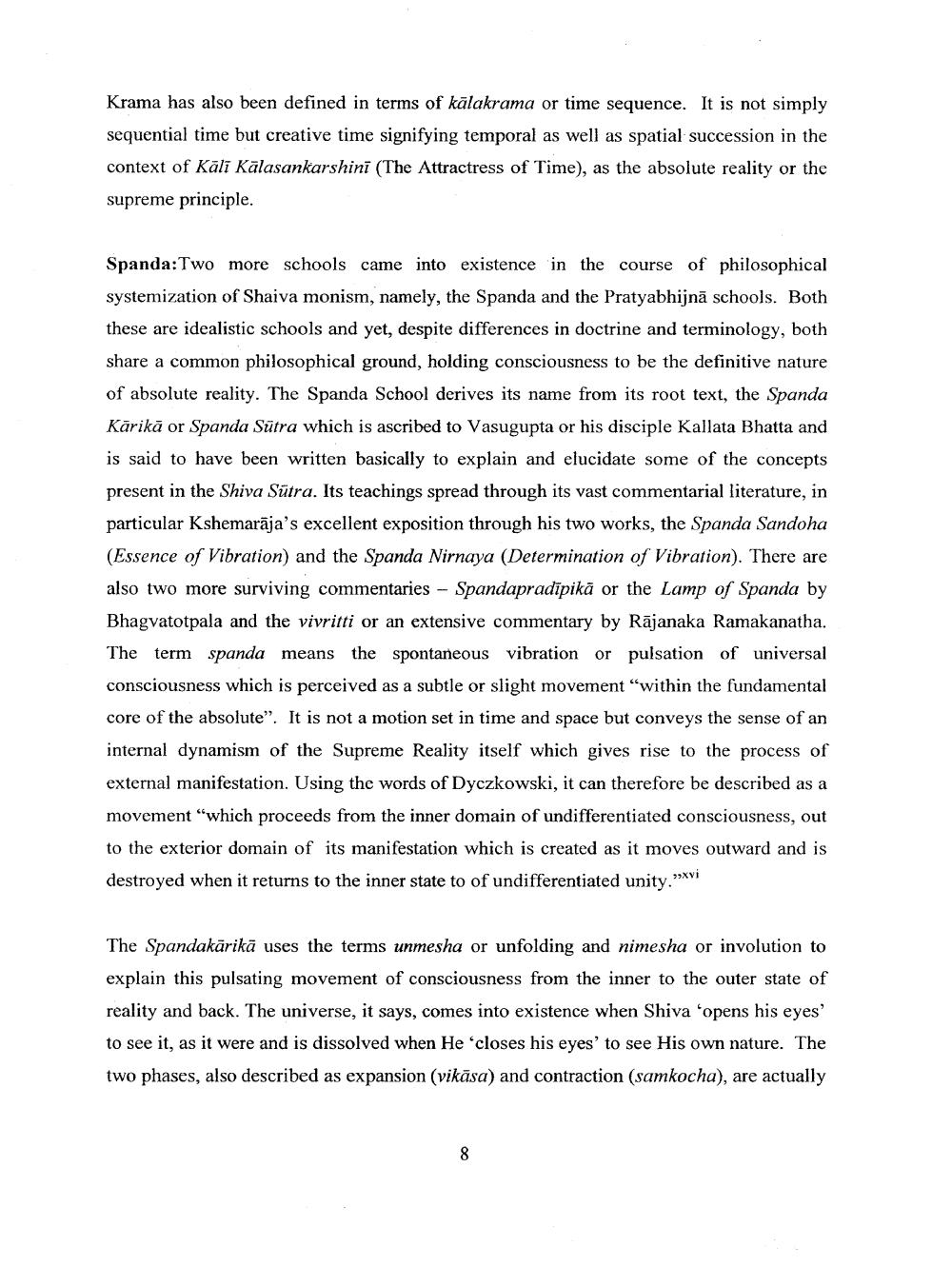Book Title: Yoga of Synthesis in Kashmir Shaivam Author(s): S S Toshkhani Publisher: S S Toshkhani View full book textPage 8
________________ Krama has also been defined in terms of kālakrama or time sequence. It is not simply sequential time but creative time signifying temporal as well as spatial succession in the context of Kālī Kālasankarshini (The Attractress of Time), as the absolute reality or the supreme principle. Spanda:Two more schools came into existence in the course of philosophical systemization of Shaiva monism, namely, the Spanda and the Pratyabhijnā schools. Both these are idealistic schools and yet, despite differences in doctrine and terminology, both share a common philosophical ground, holding consciousness to be the definitive nature of absolute reality. The Spanda School derives its name from its root text, the Spanda Kārikā or Spanda Sūtra which is ascribed to Vasugupta or his disciple Kallata Bhatta and is said to have been written basically to explain and elucidate some of the concepts present in the Shiva Sūtra. Its teachings spread through its vast commentarial literature, in particular Kshemarāja's excellent exposition through his two works, the Spanda Sandoha (Essence of Vibration) and the Spanda Nirnaya (Determination of Vibration). There are also two more surviving commentaries - Spandapradīpikā or the Lamp of Spanda by Bhagvatotpala and the vivritti or an extensive commentary by Rājanaka Ramakanatha. The term spanda means the spontaneous vibration or pulsation of universal consciousness which is perceived as a subtle or slight movement "within the fundamental core of the absolute”. It is not a motion set in time and space but conveys the sense of an internal dynamism of the Supreme Reality itself which gives rise to the process of external manifestation. Using the words of Dyczkowski, it can therefore be described as a movement "which proceeds from the inner domain of undifferentiated consciousness, out to the exterior domain of its manifestation which is created as it moves outward and is destroyed when it returns to the inner state to of undifferentiated unity."X The Spandakārikā uses the terms unmesha or unfolding and nimesha or involution to explain this pulsating movement of consciousness from the inner to the outer state of reality and back. The universe, it says, comes into existence when Shiva 'opens his eyes' to see it, as it were and is dissolved when He closes his eyes' to see His own nature. The two phases, also described as expansion (vikāsa) and contraction (samkocha), are actuallyPage Navigation
1 ... 6 7 8 9 10 11 12 13 14 15 16 17 18 19 20 21 22 23 24 25 26 27 28 29 30 31 32 33 34 35 36 37 38 39 40 41 42 43 44 45 46
